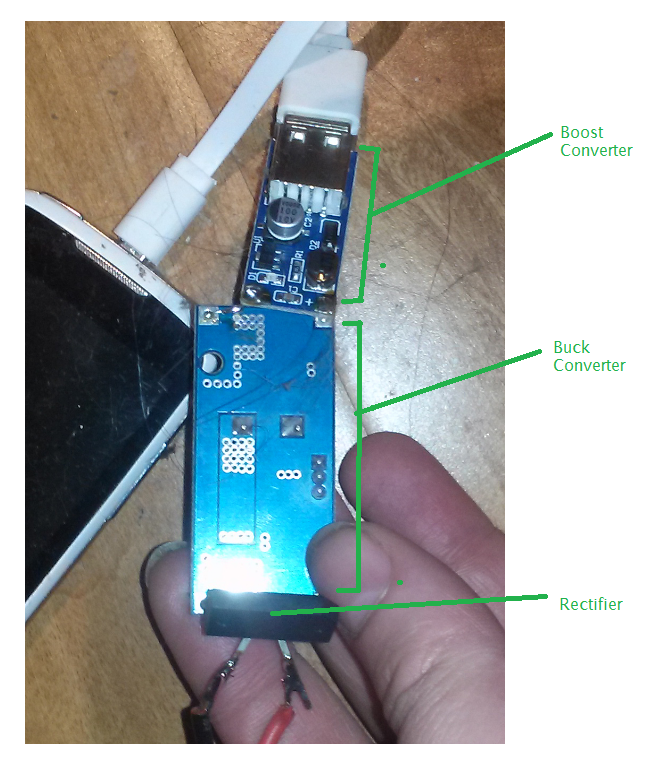Here's a little movie of Matteo working on our next prototype of the Vampire Charger:
https://archive.org/details/MatteoBorri-NewVampireCharger
Direct link to video file, if needed:
https://archive.org/download/MatteoBorri-NewVampireCharger/Matteo-Borri-Program-Log-New-1.mp4
Our Vampire Charger can also be thought of as a "Universal Charger."
The idea is that you have two piece of wire - in the video they are black and red, but they don't have to be marked clearly, as one of the points of this device is that you might not know which is which, so, to be clear the polarities don't matter. (At the very end of the video, after the phone turns on, Matteo switches the red and black inputs, to demonstrate this point.)
As Matteo explains in the video, the idea is that, regardless of what type of power input you have, you should be able to get enough juice to power a small USB device, such as a phone.
A hand-wired prototype for this was given last year to a friend in Puerto Rico, who was able to use it to call his wife after Hurricane Maria. The goal now is to make it into something that can be mass produced.
In
our improved design, Matteo decided to not
use
a microcontroller. This is because even a basic microcontroller
requires a PC for programming it, and he wanted this device to be
buildable with as few external tools as possible.
“Perfection in
design is achieved not when there is nothing more to add, but when
there is nothing more to take away” - Leonardo da Vinci.
Instead,
the logic that determines what regulators to bypass will be built
from a network of operational amplifiers used as comparators. This is
NOT a neural network, but it is similar to how a single neuron works.
As you will see now, this is sufficient to get power from DC voltages, be they 1) Car Battery 2) Boat Battery or 3) Solar Panel or 4) RC Battery even!
The solution is (See photo below.):
1) a bridge rectifier
2) A buck converter from about 30 volts to 4.
3) A little boost converter going from 4 to 5.

 Aaron Swartz Day
Aaron Swartz Day
Discussions
Become a Hackaday.io Member
Create an account to leave a comment. Already have an account? Log In.